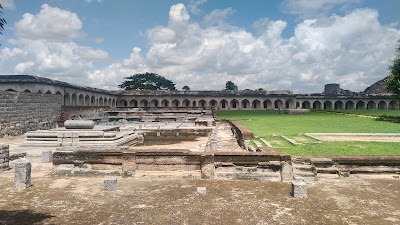
Image source: Nepsa Vlogs
About Gingee Fort
One of the most well preserved forts in south India, Gingee Fort, also known as the “Troy of the East,” is located in the Viluppuram district of Tamil Nadu, India.
History
It was initially built by the Chola dynasty, dating back to the 9th century. Later, it was expanded and fortified by the Vijayanagara Empire and subsequently came under the rule of the Marathas, Mughals, French, and British. In the 18th century, the fort was occupied by the French East India Company, and later the British captured it in 1761.
Strategic purposes
Designed for a specific military purpose, it was built across three hilltops: Krishnagiri, Chandrayandurg (Chandragiri) , and Rajagiri. It provides the fort with a triangular defensive structure. For fortification, the fort features massive stone walls, steep ramparts, and a 20 meter wide moat , which made it nearly impenetrable in its time. The fort was well planned with granaries and water tanks to support a substantial level of population.
Rajagiri Citadel
Among the three hills, Rajagir is the highest and also has the main citadel. It contains granaries, temples, audience halls, and watchtowers . After climbing 1000 steps, the view at the top offers breathtaking views of the surrounding landscape.
Kalyana Mahal
Within the a stunning marriage hall ( Kalyana Mahal) is a stunning example of Indo-Islamic architecture.
Its roof is designed in a pyramid shape with a central courtyard surrounded by rooms. In the centre of a courtyard, there is a massive square tower high (27 m) built of stones.
Tourist Attraction
Today, the Gingee fort administration and maintenance are done by the Archaeological Survey of India (ASI). It’s architectural brilliance and strategic ingenuity make it a must-visit for history enthusiasts.
